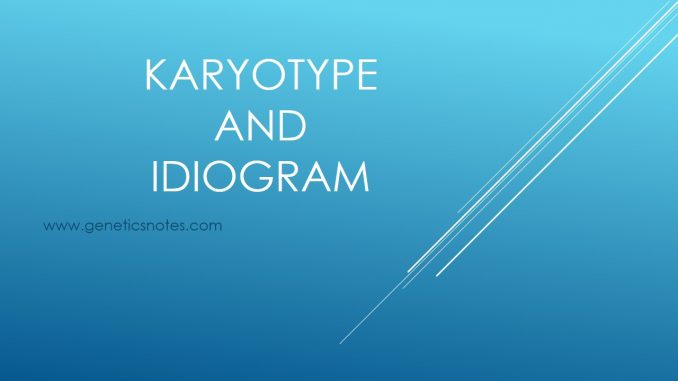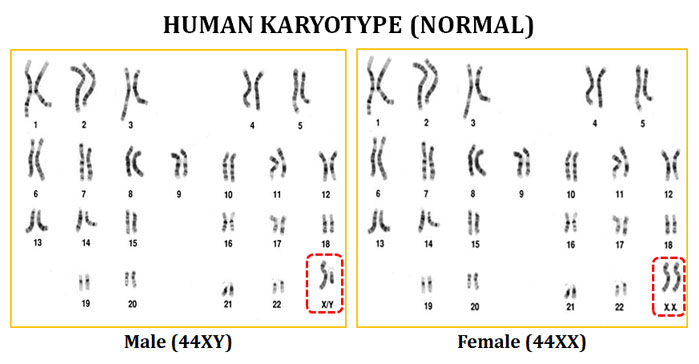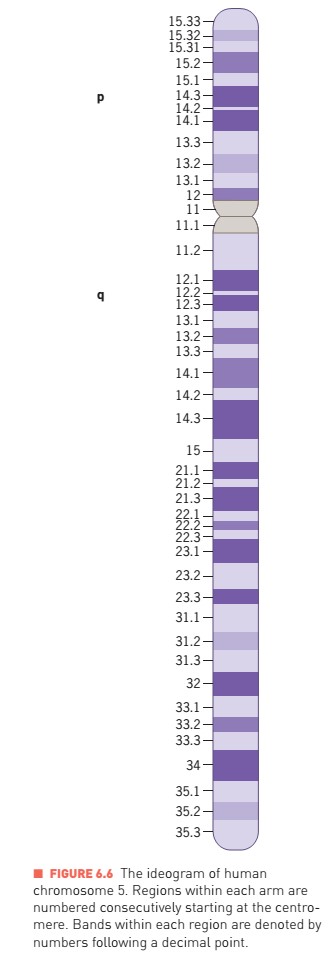
Karyotype:
- The word ‘karyotype’ is derived from Greek word “kernel” which means content of nucleus.
- The term Karyotype is referred to a group of characteristics that allow the identification of particular chromosome pair on the basis of general morphology of a set of chromosome at metaphase of a somatic cell of an individual.
- Karyotype concept was derived by S. Navashin based on the observation that the number of chromosomes and morphology of each chromosome pair is normally constant and characteristics for a species.
- Karyotype concept is a phenotypic appearance of a chromosome and its homologous pair which helps to differentiate types of chromosome based on their morphology in an individual species.
- Karyotyping is a method of arrangement of pair of homologous chromosome of a cell in decreasing series of their size.
- Karyotype study is very important to identify abnormalities in chromosomal structure and number.
- Karyotype study also helps to determine origin and evolutionary relationship among different texa.
Types of karyotype on the basis of symmetry:
- Developed by G. Levitzky (1931)
- Two types
1. Symmetrical karyotype:
- In this all the chromosome of a set are approximately of same size and have median or sub-median centromere.
- Homogenous karyotype
- It is regarded as primitive karyotype
2. Asymmetrical karyotype:
- In this all the chromosome exhibit good degree of variation in chromosomal size and also there is variation in position of centromere.
- Position of centromere changes from median or sub-median to sub-terminal or terminal.
- It is regarded as specialized or advanced karyotype.
Parameters used in karyotype preparation:
- Number of chromosome in the set
- Relative length of chromosome
- Arm ratio (ratio of length of long arm to length of short arm from the position of centromere)Position of secondary constriction
- Position and size of nucleolus and satellite
- Staining reaction and differentiation of bands of euchromatin and heterochromatin in the chromosome
Human karyotype:
- Diploid human cells contain 46 chromosomes—44 autosomes and two sex chromosomes, which are XX in females and XY in males.
- At mitotic metaphase, each of the 46 chromosomes consists of two identical sister chromatids. When stained appropriately, each of the duplicated chromosomes can be recognized by its size, shape, and banding pattern.
- Chromosome 1: is the largest autosome
- Chromosome 21: is the smallest is number 21.
- X chromosome (sex- chromosome): is intermediate in size
- Y- chromosome (sex chromosome): is about the same size as chromosome 22

Idiogram:
- Idiogram is the diagrammatic representation of karyotype showing all the morphological feature of the chromosomes grouped on the basis of position of centromere and ordered in a series of decreasing size.
- Chromosome banding and painting technique are used to identify each chromosome. These technique are also used to distinguish each arm of a chromosome and to investigate specific regions within them.
- In some chromosome, a centromere which divides each chromosome into long and short arms. The short arm is denoted by the letter p and the long arm by the letter q.
- For example, the short arm of chromosome 5 is denoted simply by writing “5p.” Thus, in the short arm of chromosome 5, we have region 5p11, which is closest to the centromere, followed by regions 5p12, 5p13, 5p14, and 5p15, which is farthest from the centromere.
- Within each region, individual bands are denoted by numbers following a decimal point; for example, 13.1, 13.2, and 13.3 refer to the three bands that make up region 5p13. The pattern of bands within the chromosome is called an idiogram

